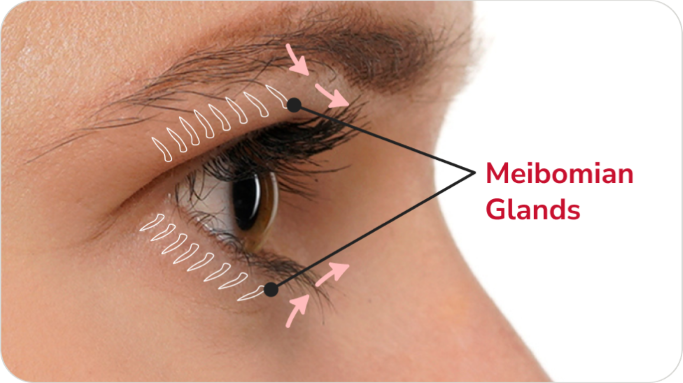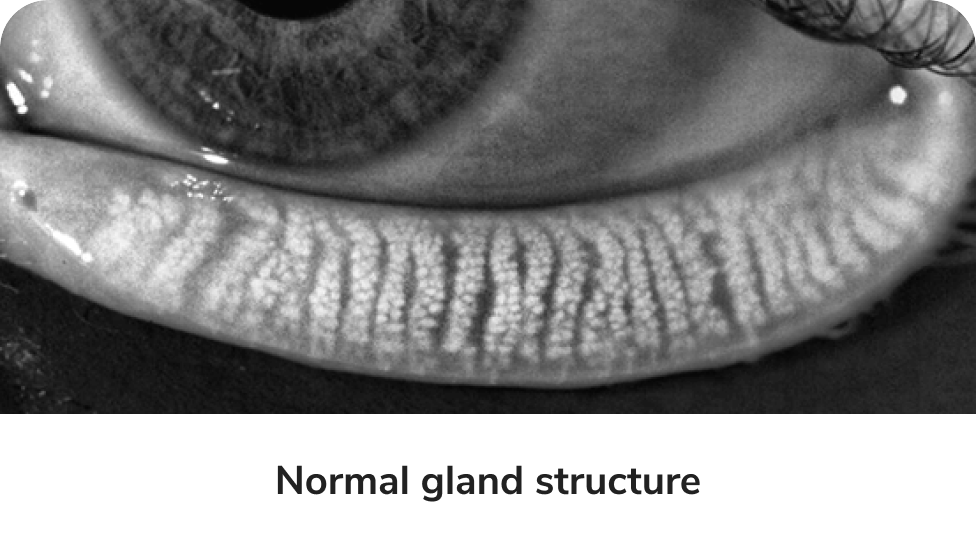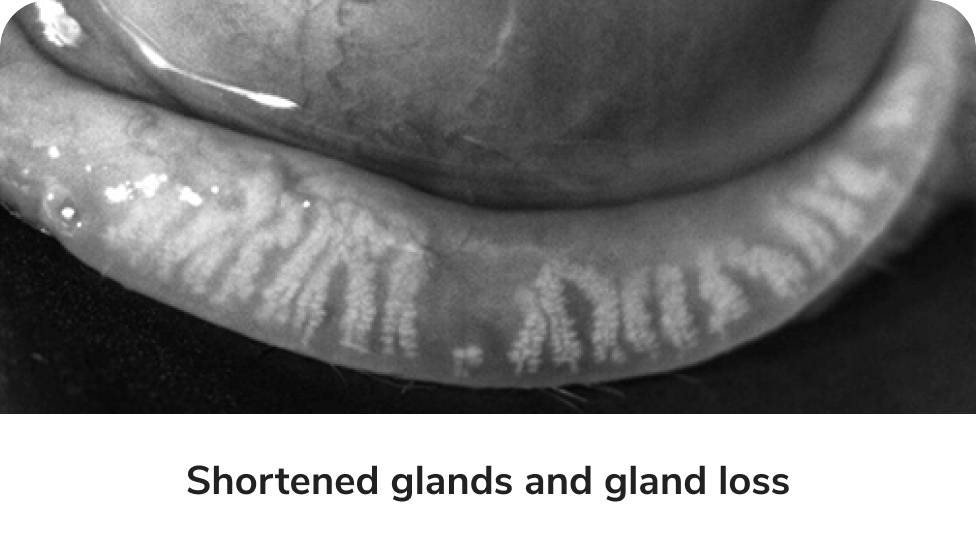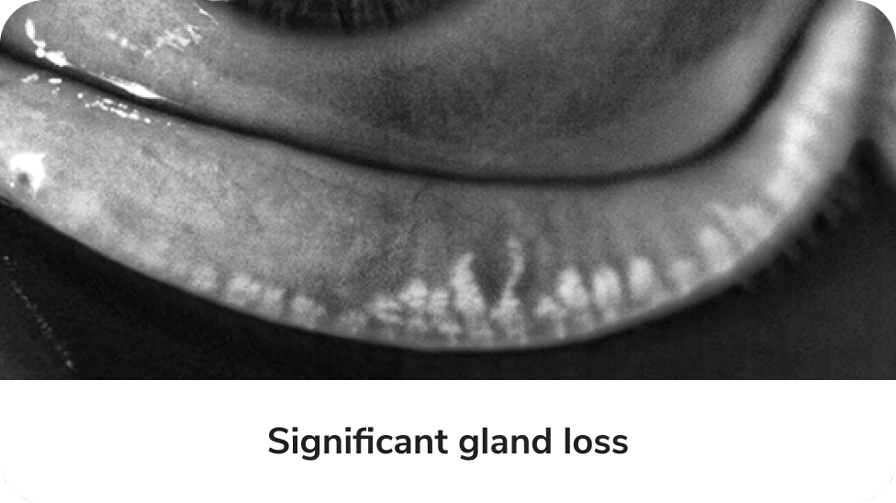Who's Affected?
Studies have shown that MGD was prevalent in (the following high-risk groups):
- 60% of contact lens wearers3
- 57% of diabetics5
- 52% of cataract patients7
- 86.8% of perimenopausal women4
80% of glaucoma patients6
Plus, in a separate study, 72.5% of patients presenting for refractive surgery evaluation had meibomian gland atrophy (indicative of MGD).8






